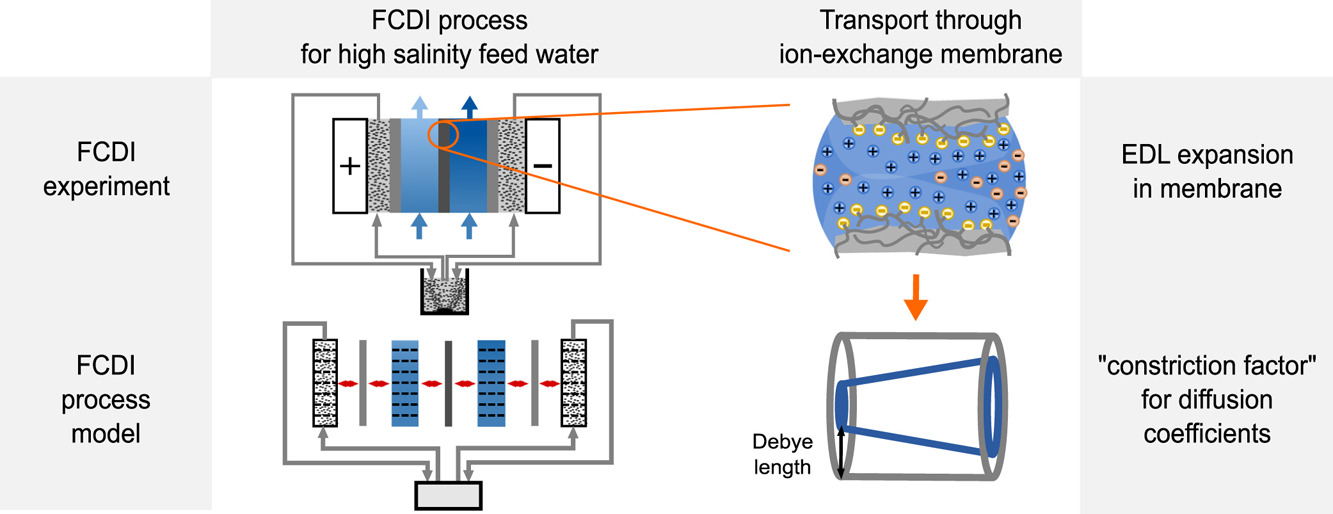Process model for high salinity flow-electrode capacitive deionization processes with ion-exchange membranes

Abstract
Flow-electrode capacitive deionization (FCDI) is an electrically driven water desalination technology promising for many applications, such as industrial wastewater treatment. FCDI exploits the pumpability of carbon slurries, enabling a continuous process suitable for a wide range of feed salinities. Previously, we demonstrated the applicability of FCDI processes with incorporated ion-exchange membranes for the desalination and concentration of saline brines containing 60–120 g/L NaCl. At such elevated salinities, steep concentration gradients occur across the membranes of an FCDI cell. Hence, the characteristics of the membranes become crucial for the overall process performance. It is not yet fully understood, which physical phenomena dominantly influence the ion transport. In this article, we present the first FCDI process model focusing on brine treatment. While our previously published FCDI model (Rommerskirchen et al., 2018) was suitable for simulating the treatment of low salinity solutions, the model at hand includes more non-idealities and focuses on the ion transport through the ion-exchange membranes. We introduce a constriction factor (sigma-factor) for the diffusion coefficients to model the electrical double layer behavior within the membranes at steep concentration gradients. Hence, the model is now also suitable for the simulation of continuous FCDI processes for brine treatment and shows good correlation with experimental results.
This was my Bachelor thesis. I developed a model (in gProms) for the flow-electrode capacitive deionization (FCDI) process. FCDI is a novel water desalination technology our chair uses to recover lithium from brines (battery waste). The simulation is able to predict the process behavior for a wide range of salinities.